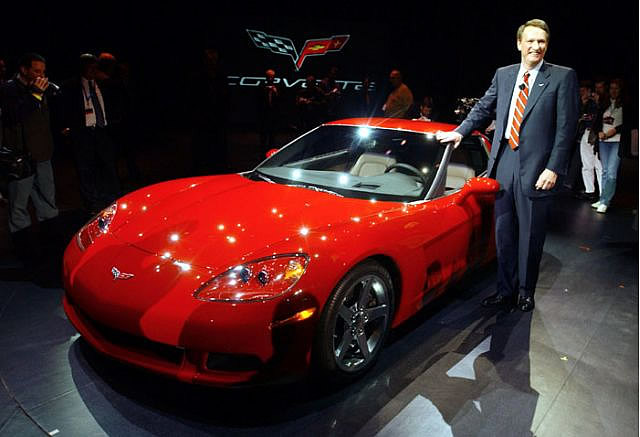1997 Corvette Unveiled at the North American International Auto Show

FOR RELEASE: January 6, 1997
CONTACT: Chevrolet Motor Division Communications
Phone: 1-800-CHEVY-MI
Fax: (810) 492-8853
NAIAS — Corvette
DETROIT — The Corvette has been a staple in the car lover's diet since 1953, and continues to be to this day. Proof comes from the fact that the Corvette has been America's best-selling sports car for several decades. The new model combines beauty, performance, comfort and magic all in one sleekly styled, aerodynamic machine. The fifth-generation Corvette will reach out to loyalists, as well as those who are not traditional Corvette buyers. It adds new materials, engineering and design to produce a vehicle worthy of its ground-breaking heritage. The 1997 Corvette is true to its reputation. The legend lives.
- The Corvette is all-new from rubber to roof.
- The new engine is a 5.7-liter LS1small-block, producing 345 hp and 350 lb.-ft. of torque — all from a more compact unit.
- The all-aluminum engine block is lighter and stiffer than previous cast-iron designs.
- The rear-mounted transaxle opens up a great deal of interior space, especially in the footwell area, and helps maintain a near 50/50 distribution of weight from front to rear.
- The Electronic Throttle Control (ETC) allows engineers to tune the vehicle's throttle progression almost infinitely. ETC also incorporates cruise control and traction control into a single controller.
- There are three fully independent, four-wheel, short-/long-arm suspension choices. The base suspension provides excellent ride and handling. Optional F45 is the high-tech choice offering Selective Real-Time Damping. The optional Z51 package is designed for the owner who wants to compete in autocrosses.
- The stiffest underbody structure in the car's history consists of two full-length, hydroformed perimeter frame rails coupled to a stiff backbone tunnel. The rails consist of a single piece of tubular steel, replacing the 14 parts previously used.
- The structural changes create more room for people and cargo, easier-to-access door openings and an improved angle of visibility through the windshield.
- The wheelbase is 8.3 inches longer, while overall length is up just 1.2 inches.
- In the event of a flat tire, the Goodyear Eagle F1 GS Extended Mobility Tires can run for up to 200 miles at 55 mph on deflated tires.
- The interior features 70% more cargo space, thanks in part to the rear-mounted transaxle and twin mid-ship-mounted fuel tanks. The fuel tank design minimizes fuel load effects on weight distribution.
- Interior styling features the twin-pod cockpit, a style that originated with the first Corvette in 1953. The passenger side grab handle is also back, as is a dash-mounted ignition switch. The new instrument panel contains traditional analog gauges that are backlit and a digital Driver Information Center. This display provides 12 individual readouts in four languages.
- The tail section on the 1997 version is quite different from past Corvettes. The vehicle's blunt rear end allows for smoother airflow. The tail is also higher, which allows for more cargo room.
- The end result is a drag coefficient of 0.29, the second lowest drag of any mass-produced car in North America (GM's own EV1 takes first place).
INTERIOR SPACE SPECIFICATION CHART
Dimension Improvement
(‘97 vs. ‘96)
| Headroom | +1.3 in. |
| Legroom | +0.7 in. |
| Shoulder room | +1.4 in. |
| Driver footwell width | +3.1 in. |
| Passenger footwell width | +6.3 in. |
| Seat Travel | +0.5 in. |
| Cargo capacity | +12.4 cu. ft. |
| Trunk area reach over distance | -13.8 in. |
| Door opening, top | +0.8 in. |
| Step in height | -3.7 in. |